In the case of the 24-hour La Tuque Swim, the older generations of marathon swimmers do not exaggerate when they describe the difficulty of this race. And, the younger generations of open water swimmers hold their predecessors in high esteem.
 The first 24-hour La Tuque Swim was held in 1965 in Lake Louie, a spring-fed lake in Quebec, Canada. Lake Louie is a small circular lake surrounded by a sidewalk and grass areas that provided excellent viewing of the entire lake.
The first 24-hour La Tuque Swim was held in 1965 in Lake Louie, a spring-fed lake in Quebec, Canada. Lake Louie is a small circular lake surrounded by a sidewalk and grass areas that provided excellent viewing of the entire lake. The course itself was also circular and marked by buoys along the ⅓-mile length.
One full circumnavigation of the course was ⅓ mile. The race was a 2-person relay where one swimmer could swim as many laps as he/she choose as long as at least one lap was completed. The relay members could only change at the partner-changing dock.
 The Swim was inspired by the famous 1963 60-mile (96.5K) race across Lake Michigan when Egyptian Abo-Heif beat Chicago’s Ted Erikson. The Who's Who of open water swimming in the 1960's and 1970's flocked to the incredible race of endurance. The International Swimming Hall of Fame honor swimmer, Horatio Iglesias of Argentina won the race a record six times.
The Swim was inspired by the famous 1963 60-mile (96.5K) race across Lake Michigan when Egyptian Abo-Heif beat Chicago’s Ted Erikson. The Who's Who of open water swimming in the 1960's and 1970's flocked to the incredible race of endurance. The International Swimming Hall of Fame honor swimmer, Horatio Iglesias of Argentina won the race a record six times.In 1980, Paul Asmuth and James Kegley went 1-2 in the pro Atlantic City Around-the-Island Swim and were invited to Lake Louie as the team to beat.
 Asmuth, an inductee in the International Marathon Swimming Hall of Fame, described their race strategy:
Asmuth, an inductee in the International Marathon Swimming Hall of Fame, described their race strategy:"James and I each swam a mile at a time. The day was cool and raining and water low 60°s. The night was very cold and there was a bunk house to go into to try and warm up in the twenty minutes between shifts."
In a typical display of stamina typical of those pioneering days, the race organizers paid for an Egyptian swimmer to swim by himself for 24 hours. Asmuth fondly remembers his stout competitor, "…the cold did not affect him. He had those old style scuba goggles on and he would smile and wave under water each time James and I passed him; it was a very funny sight. It was something to look forward to during the monotony of the night when the spectators went home around 2 a.m."
Because the race was organized as a commercial venture by the local chamber of commerce, there was a festival next to the lake and many spectators throughout the race except for 2-6 a.m. Labatt Brewery was the main sponsor and, as Asmuth recalls much beer was consumed.
As Asmuth and Kegley pushed themselves to exhaustion, there was not much competition so they focused on breaking the record of Olympian John Kinsella and his Indiana University teammate Bill Heiss. Kinsella and Heiss had previously swum 203 laps. By the 24th hour, Asmuth and Kegley had swim 207 laps of Lake Louie or about 69 miles total (34.5 miles or 55K each).
Asmuth recalled, "James ended up swimming one lap further than me because I needed a little extra rest during the night and he was a great friend for that."
Throughout the race, Asmuth and Kegley never let up and relied on each other to motivate each other. "We wrote notes to each other to communicate how we felt and there was a lot of humor as I recall," said Kegley, also an inductee in the International Marathon Swimming Hall of Fame and All-American from Indiana University. "I think we questioned our sanity at some points, particularly at around 3 or 4 am when the bands had stopped, the people had passed out or gone home and the only sign of life were the few officials and other swimmers."
 But, the men were serious about breaking the Kinsella-Heiss record and never let up during the lonely hours of the late night/early morning. "We had to tag each others hands before plunging in off the floating platform and since we were going for a record, we didn’t stop to chat," said Kegley. "The hard part was just beginning to get warmed up and then hopping back in. It was surreal watching the sun come up and seeing people around 7 or 8 am drift in, all the while painfully aware we had been swimming all day and night. I seem to recall someone brought in donuts in the wee hours."
But, the men were serious about breaking the Kinsella-Heiss record and never let up during the lonely hours of the late night/early morning. "We had to tag each others hands before plunging in off the floating platform and since we were going for a record, we didn’t stop to chat," said Kegley. "The hard part was just beginning to get warmed up and then hopping back in. It was surreal watching the sun come up and seeing people around 7 or 8 am drift in, all the while painfully aware we had been swimming all day and night. I seem to recall someone brought in donuts in the wee hours."In-and-out, in-and-out…of 15°C (60°F) water...for 24 hours The race is no longer held, but remains legendary among the pioneering professional marathon swimmers.
Photo of Lake Louie by AnaB*.
Copyright © 2008 by Open Water Source



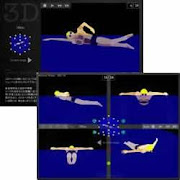




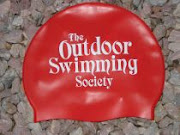

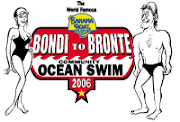


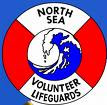
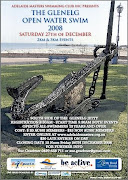





No comments:
Post a Comment